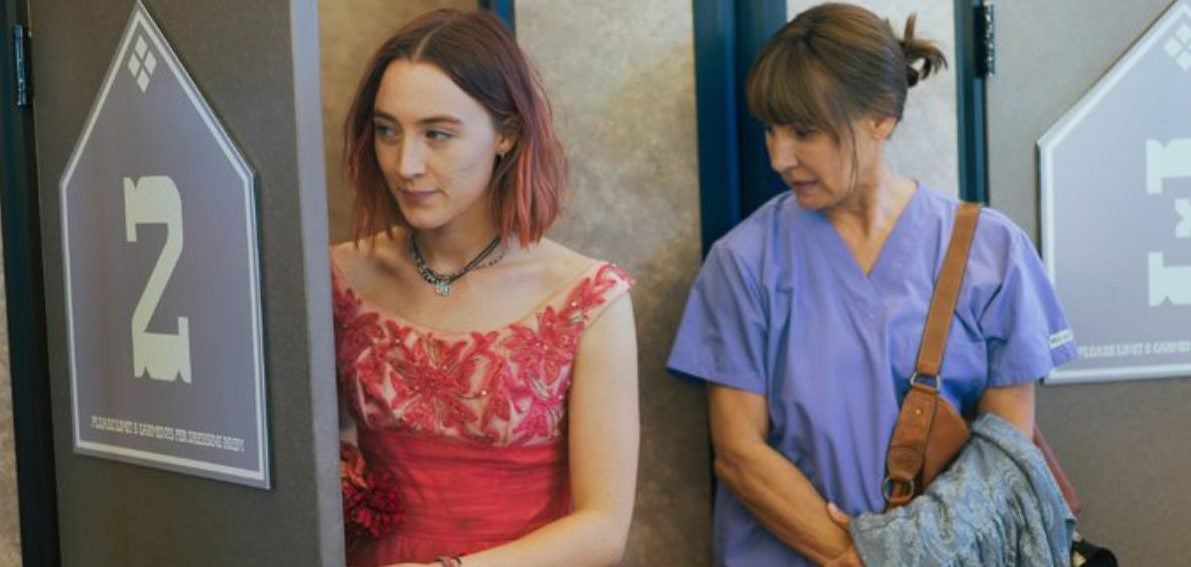The success of “Lady Bird” shows white stories can work half as hard for twice the acclaim
Like Moonlight before it, the critically adored Lady Bird is a film of unexpected highs and very few lows. This unusual coming-of-age tale centers around a character type that is often overlooked for top-star billing—a young, working class, and struggling teenage girl, desperately seeking a place in a world that frustratingly eludes and confounds her. Moonlight focused on a similarly sidelined type: a young, black, gay man.


Like Moonlight before it, the critically adored Lady Bird is a film of unexpected highs and very few lows. This unusual coming-of-age tale centers around a character type that is often overlooked for top-star billing—a young, working class, and struggling teenage girl, desperately seeking a place in a world that frustratingly eludes and confounds her. Moonlight focused on a similarly sidelined type: a young, black, gay man.
It’s not that Lady Bird— the film’s titular character—fails to understand the circumstances that surround her adolescent Northern California existence (unrequited and misguided love; disapproving mom; unemployed father). Rather, she views these obstacles as mere technicalities: present-tense challenges that should not necessarily define her fate or future. Her boyfriend may be gay and parents broke, but Lady Bird remains definitely determined to lose her virginity by prom—and somehow study in New York after graduation.
And, that’s about it. Lady Bird is full of pointed writing and poignant performances—a credit to its cast, as well as to writer and director Greta Gerwig—but not much else happens in the movie. Still, the film has garnered nearly unprecedented accolades—most notably, a perfect 100 critics’ score on Rotten Tomatoes. “Big-screen perfection,” the New York Times called it.
To be sure, it’s a good movie. But the sting of the #oscarsowhite debacle is barely two years behind us; and Moonlight‘s nail-biter of a best picture victory in this year’s Academy Awards offered little reassurance about the future of Hollywood diversity. In that landscape, the massive acclaim for Lady Bird reflects how little films focused on white characters have to do to succeed stratospherically.
Both Moonlight and Lady Bird come from the same studio—the “anti-Hollywood” newcomer A24. Their protagonists are each young, urban, and striving. And both films were heralded as groundbreaking achievements. But that is where the similarities end.
Moonlight is a multidimensional masterpiece—a triumph not just for its writing and acting, but its direction, soundtrack and cinematography. Everything about the film is heightened and supreme—transcending mere race-based applause while never forsaking race as a core of its being.
Lady Bird does not reach such heights—nor does it particularly attempt to (or, apparently, have to). The film has been rightly admired for shedding light on young women’s stories—which are increasingly rare amid our cultural obsession with bro-flicks and billion-dollar action franchises. But as ground-breaking as her narrative might seem to young people today, Gerwig is not covering new ground.
Nearly three decades ago, the iconic director John Hughes invented an entire cinematic genre around awkward high school girls grasping for distinct identity and self-expression while still trying to score the hot boy. Molly Ringwald perfected the gawky-cool striving teen heroine in Sixteen Candles and Pretty in Pink, and provided the perfect foil to Ally Sheedy’s weird girl in The Breakfast Club. Those films were truly pioneering.
We live today in far more politicized times, where every cultural expression must be qualified with deeper meaning. Lady Bird is stuffed with this sort of manufactured meaningfulness. With its “indie darling” female director and fashionable lady lead, Lady Bird is ready-made for the #metoo moment. It’s good news that this constituency exists and is gaining cultural power—but the ease with which Lady Bird has used it to slide into prominence feels hollow, with little true gravitas to back it up.
Folks might retort that Lady Bird does reference the class, gender, and sexuality dynamics of Moonlight—and indeed it does. But other than Laurie Metcalf’s searing performance as Lady Bird’s lovingly bitter mother, they’re just too subtly realized to make much of an impact. Nothing about Lady Bird—not its script nor its actors or director—feels like it’s worked hard enough to deserve the near-universal approval it has garnered. Meanwhile, much like black America itself, Moonlight had to work twice as hard for half the praise.